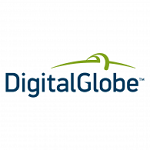Service objectives
The following list represents the Key Service Objectives (KSO) for the Appleton Greene Technology Innovation service.
Objective Strategy
The five service objectives of the Technology Innovation service create a logical progression for this service, taken in full scope together, or when a particular situation warrants, the five service objectives emphasized or executed as constituent parts. The service objectives can be purchased as a complete process. They can be treated as stand-alone objectives/activities for select targeted consulting engagements. Or, they can be used together, but weighted differently based upon the client’s needs. The main theme of this service objective is vision. The Technology Strategy service objective focuses upon assisting client organizations in taking a top-level view of their technology integration needs. Technology strategies are an integrated part of an organizations’ broader strategic objectives. Technology strategies and objectives cannot be taken out of the context of an organization’s goals, objectives, strategies, and plans. Some niche technology firms view this task very narrowly. This service objective does not begin with selecting a technology architecture, but can end with one once organizational strategies and technology strategies are aligned. This service objective is executed by collaborating with senior executives, leaders, and members of the client organization’s strategy team, whether one is formally designated or informally active. Through a process of reviewing available new technology/new strategy planning documents and individual and small group interview sessions, the broad focus for the Technology Innovation under consideration is examined and explored. This aligns with the information gathering phase at the start of any new consulting engagement and as outlined in the Service Methodology. The point is to facilitate or perform (depending upon internal support available to the consulting engagement) the articulation of a shared vision for strategic alignment between top-level goals and objectives for the organization and the opportunities and threats from corresponding technology acquisition, retirement, or integration strategy(ies), which may be considered.

Assessing Alternatives
The five service objectives of the Technology Innovation service create a logical progression for this service, taken in full scope together, or when a particular situation warrants, the five service objectives emphasized or executed as constituent parts. The service objectives can be purchased as a complete process. They can be treated as stand-alone objectives/activities for select targeted consulting engagements. Or, they can be used together, but weighted differently based upon the client’s needs. The main theme of this service objective is research, articulating opportunities, and winnowing down opportunities to a small family possibilities. The Assessing Alternatives service objective is oriented on extending the Objective Strategy analysis and considering feasible courses of action based upon resources constraints, technology maturity constraints, cultural acceptance and technology adoption constraints, and organizational risk acceptance/avoidance constraints. The outcome of this objective are broad, clear alternatives that are fundamentally different ways to develop and articulate the Technology Innovation strategy in terms of strategy implementation choices. This service objective is executed by considering all technology insertion/technology adoption proposals that achieve the planned Technology Innovation strategy articulated in the prior objective. The process is similar to the prior step, however, the information gathering activity (reading, interviewing, drafting alternatives for analytical drill down, etc.) shifts the focus from prior internal planning and discussion documents and meetings to researching available off-the-shelf technologies or soon-to-be-available new technologies. The focus of external research is driven largely by existing standards and technologies the organization imposes on itself, and a clear understanding of the organizations’ risk avoidance/risk acceptance profile. Finally, depending upon the client organization’s tolerance for risk or their culture/plan to be an industry leader, the analysis alternatives can be broad and sweeping or more narrowly constrained. However, it is usually always a good exercise to consider the analysis of alternatives both unbounded by constraints—to let client managers and executives get a feel for the start of the art of the possible or near possible—and then to begin to bound the alternatives by client preferred or defined criteria, grouped around common bins such as: resource-constrained, possibility-constrained, regulatory-constrained, market dynamics-constrained, technology maturation-constrained, and risk-constrained.

Technology Valuation
The five service objectives of the Technology Innovation service create a logical progression for this service, taken in full scope together, or when a particular situation warrants, the five service objectives emphasized or executed as constituent parts. The service objectives can be purchased as a complete process. They can be treated as stand-alone objectives/activities for select targeted consulting engagements. Or, they can be used together, but weighted differently based upon the client’s needs. The main theme of this service objective is assessment and analysis. The Technology Value service objective focuses upon assisting or leading client organizations in performing strategic technology assessments, considering the “as is” state and one or more alternative future “to be” states. This service objective bridges the gap from the Objective Strategy (a high-level “what” and “why’ of implementing Technology Innovation) combined with the Assessment of Alternatives (“what all can/should we do”?)—and getting to valuing and fitting the “what” or “which” into a “how” or “how much”? Further, this service objective continues the analytical assessments begun in the prior objective and continuing the winnowing and clarifying process by evaluating the remaining alternatives using industry and firm-appropriate appropriate scoring criteria. This service objective is executed by using the client’s risk acceptance/avoidance filter and then taking a custom balanced score card approach to the alternatives being evaluated, comparing them to one another. The Technology Valuation service objective, in the context of a Technology Innovation project, must necessarily consider a full scope of valuation and evaluation criteria, again, within the broader strategic context of what the client organization aims to accomplish. This may seem pedantic to write it, but the old engineering aphorism, “tell me how you’ll measure me and I’ll tell you I’ll perform,” applies to valuing and assessing the business value of a new technology or a new technology product line. Targeted criteria—focused on evaluating the technology(ies) in question—against the original strategic objectives is critical to success.

Technology Integration
The five service objectives of the Technology Innovation service create a logical progression for this service, taken in full scope together, or when a particular situation warrants, the five service objectives emphasized or executed as constituent parts. The service objectives can be purchased as a complete process. They can be treated as stand-alone objectives/activities for select targeted consulting engagements. Or, they can be used together, but weighted differently based upon the client’s needs. The main theme of this service objective is synchronization with other activities and synchronization of the technology within the culture and business transformation requirements. The Technology Integration service objective continues the Technology Innovation pursuit from strategy to implementation, flowing from the functional and economic analysis of alternatives, which lead to a winnowing of the alternatives, and ultimately a selection of the technology strategy and its associated technology plan of action for implementation. This service objective is the implementation planning and execution step. This service objective ensures the plan for the new technology adoption is both thoughtfully planned and executed. This service objective is executed by linking the analytical and planning flow from the preceding three service objectives, and shifting the focus from planning to execution. Technology integration is the process of linking the planned Technology Innovation with the requirements of integration environment. In popular and academic literature, there are several versions of the Technology Integration Matrix, the core of each are up to five dimensions of engagement and five dimensions of integration (e.g., Entry, Adoption, Adaption, Infusion, and Transformation). Thus, the Technology Integration service objective ensures the selected technology path fits within the needs and contexts of the organization. This is not trivial. In management science, there is growing consensus that the majority of process improvement change projects which fail, fail to achieve some or all of their objectives because the workforce resists the change. And, they resist the change because the fear the uncertainty of not knowing what the change means, and they resent the uncertainty about how it will work. Technology Integration plans and execution are hard; they must be well thought out, both technically and managerially.

Managing Technology
The five service objectives of the Technology Innovation service create a logical progression for this service, taken in full scope together, or when a particular situation warrants, the five service objectives emphasized or executed as constituent parts. The service objectives can be purchased as a complete process. They can be treated as stand-alone objectives/activities for select targeted consulting engagements. Or, they can be used together, but weighted differently based upon the client’s needs. The main theme of this service objective is metrics, performance, and portfolio technology management. The Technology Management service objective is the part of the process that turns implementing a new strategy into sustained operational use. It is about planning for and executing the return to (new) steady state operations with the new Technology Innovation initiatives undertaken. Technology Management includes the full range of plans for managing and monitoring the effectiveness and efficiencies planned for are achieved. The old management science aphorism of not being able to manage what you do not monitor comes to mind. Note, some authors define technology management as the full lifecycle scope of evaluating current technology, envisioning new technology projects, forecasting technology trends, selecting targeted technologies for implementation, implementing their insertion into the business model, and then monitoring and managing both the current and new technologies as a portfolio of technologies supporting organizational operations. This service objective is executed by management of implemented new technology projects. The broader view of Technology Management is a useful view in some contexts; however, for this Technology Innovation consulting service, the early lifecycle activities just described are executed separately as the first four service objectives in the consulting service. Thus, in this context, Technology Management takes a more narrowly focused view on the backend of the Technology Innovation lifecycle, and pertains more specifically to managing and monitoring both the existing and newly integrated technologies into one bundled portfolio.
This service is primarily available to the following industry sectors:

Government
The US Federal government is a large and complex enterprise. A large part the economy and life the firms and people of the Washington, DC metropolitan area directly or indirectly perform in or support the different agencies and departments of the federal government. This sector—like much about other parts of the US economy writ large—is working hard to do more with less; to become more efficient and more effective.
This drive for efficiency and effectiveness includes a high degree of technology integration. From personal and enterprise technologies to improve workflow (e.g., innovate web and mobile apps at the VA to speed and improve healthcare delivery to Veterans who use the VA for healthcare) to large systems or systems of systems technologies which are ends unto themselves (e.g., long-lead time satellite constellations or innovate space exploration vehicles and programs). Information technology undergirds most new technology innovations. Government agencies and organizations of all sizes, need assistance in achieving department/agency objectives.
Technology in many forms is ubiquitous in modern society. Private sector and commercial advanced technology purveyors are transforming all aspects of our work and personal lives. This industry is characterized by federal, state, and local governments procuring technologies for its own operational needs. And it is also characterized by private sector firms who service these federal, state, and local governmental agencies, departments, and organizations. Together, they are leading society into new processes and ways of doing business, specifically in high-impact domains in US society such as healthcare, technology development, and education, and through applications and systems development in governmental agencies and departments, including the military and defense and intelligence communities. In the business world, technology is the backbone of the operations of virtually every business, so it is becoming in the government sector as well.

Healthcare
Two of the hottest sectors embracing new technologies in a transformational way are education and healthcare. Innovation in healthcare delivery is a matter of necessity. Healthcare is increasingly more expensive; expensive in terms of consuming cost resources (at all levels of the value-chain) and ‘expensive’ in terms of the mismatch between care providers and patients and their families—the time impact of delivering ever more complex care to constantly growing population.
The transformation of the healthcare field, and by extension, the delivery of healthcare using new technologies large and small, is driven by many internal and external factors. Market demographics is one of these. A big one. The fact that patient populations can move around much more quickly and seamlessly than ‘big healthcare’ can build new hospitals, clinics, and practices means that part of the mismatch between care delivery and care receipt is locational. This locational aspect, or mismatch between care delivery and receipt is also driven by the aging of the US population. These two factors are driving innovative healthcare providers and networks to pursue telehealth solutions. Telehealth demands new models for delivering care. And also demand ancillary innovations to enable these kinds of solutions. The push to deliver electronic health care (EHR) solutions and products—commercially or proprietarily to the network—is also symptomatic of the transformation in healthcare innovation.
Patient-centered care is both a buzzword and a philosophy. Collaborative care management involving patients in closer cooperation and collaboration with their providers is also symptomatic of the ongoing change. Care delivery. Care management. Leveraging innovative off the shelf and custom technology solutions. These are all driven by the changes in the health marketplace. Lastly, setting aside the politics of delivering and consuming healthcare in traditionally “red’ and “blue” states, which often view healthcare delivery and consumption from vastly different perspectives, the industry is under greater public and legislative scrutiny as well. These are all symptomatic of an industry in change that needs thoughtful analysis and leadership to manage these changes and the resources associated with them well.

Education
Like healthcare, education and new educational technology (EdTech) are hot-button topics in the US today. This is true because of transformations on both ends of supply-demand relationship. They are also hot-button topics for three other reasons: they are ripe for technology-driven innovation, they are needed by nearly everyone in society at one time or another, and they are both highly politicized in some locales. Political preferences and ideologies affect to varying degrees, how these two industries are viewed, managed, and supported.
In the case of education and EdTech), the market is routinely parsed into useful to analyze and manage market segments: public versus private, including charter and home-schooling alternatives; K-12 versus higher education, where even the role of different forms of higher education are considered (e.g., community colleges, public and private undergraduate institutions, graduate education, and for-profit colleges and universities.) Each of these segments are important because they primarily serve different constituencies. Segment size, objectives, resources, and to an increasing degree, public opinion, affect how each segment delivers education within segment. The process of delivering education within these market segments is evolving to deal with new assumptions about how to measure success and how to accommodate changing market demographics. This evolution in the education and EdTech, is highly impacted by the insertion of new technologies into the process. As with healthcare delivery and the shift to a patient-centric focus, education and EdTech are likewise shifting to a, ‘teach how learners learn’ model. But not universally. This innovative shift in focus on pedagogy and what should be the measures of success has led to a lot of innovative and entrepreneurial thought being applied to new products and services in Ed and EdTech. Investor resources are chasing these innovations. Large and small firms in the Ed and EdTech market space are racing to be first to market with the hot new application or technology.
Setting aside supplier side changing dynamics and demand site changing demographics and objectives, the fundamentals of education remain important: teaching methods, content, quality of instructors and support infrastructure all matter. Linking the future (technology innovation and pedagogical change) with the past (getting the basics right), other innovations in education, such as free content (e.g., MOOCs, organizations like Khan Academy, edX, or even YouTube) up-end assumptions over what’s most important: content delivery or degrees and certifications that content was received. The transformation continues.

Defense
The annual US Defense Department budget is a significant part of the United States’ annual budgeting process. A subset of this market are the 16 different agencies and departments, which in whole or in part, comprise the US “Intelligence Community” (IC). These IC agencies and departments rely significantly on technology innovations, and are, in fact, key drivers to research and development funding for high-risk technology innovations that affect national security and the “C4ISR” technologies and activities (i.e., Command, Control, Communications, Computers, Intelligence, Surveillance, and Reconnaissance).
In different technology hubs across the nation, but particularly within the National Capital Region surrounding Washington, DC, government agency, department, and organization customers, struggle to manage the resources for their organization, driving to achieve more for less. These same government departments, agencies, and organizations develop close, collaborative relationships with favored affiliated vendors and contractors (large and small), which vendors tend to cluster for ease of providing rapid, high quality products and services to their government customers. Beyond contracting commonalities with other government entities, the US Defense Department and its relationship with 16-member Intelligence Community has a very high priority portfolio of missions and tasks centered on ensuring national security for US citizens and our nation’s allies. These missions are complex. External security threats constantly evolve. The only constant is change.
There are many different ways in which client firms approach their current and potential future Federal customers, particular in the Defense and Intelligence marketspace. There are a wide variety of technology consulting services and a full range of products which perform in or administer the seven different core C4ISR functions listed above. Full scope systems development for multi-billion or multi-million dollar systems of systems all the way down to small and portable custom web and mobile apps solutions.

Manufacturing
Bridging the last century, the current century, and the future, Manufacturing is an industry undergoing tremendous change. Recalling Alvin and Heidi Toffler’s “The Third Wave” thesis for the focus of analyzing the economic drivers for societies over time: first an agricultural wave, then an industrial wave, and then an information-based wave, it is important to realize even in the information age, agriculture and manufacturing still occur, albeit in hyper efficient ways compared to their former selves.
Manufacturing as a consulting industry customer focus deals with the problems and opportunities of technology integration within forward leaning firms, large and small, within the 21st century manufacturing market. The marketplace is uncertain. As with other aspects of US society, a certain politicization of the discourse around the current and desired future roles has settled into industry forecasting. Manufacturing is a broad title. Within this broad domain, manufacturers within different market segments struggle with product relevance, process efficiencies, demand for finished goods in the US or abroad, and uncertainty about the efficacy or the timing for making large investments in digital transformations and other technology integration. According to the International Monetary Fund, Manufacturing is expected to grow at a modest 3.4% in 2017. This creates a strategic balancing act for being cost-competitive on the short-term, or being forward looking in the longer-term. Lastly, in most industries, the global economy general benefits robust western democracies. But a growing fever of nationalism in some nations portends potential future pressure on customer markets, labor markets, and investor markets. Through all of these pressures, Manufacturing leaders must chart a future course for revenue growth and increased profitability.
Bronze Service

Monthly cost: USD $1,500.00
Time limit: 5 hours per month
Contract period: 12 months
Bronze service includes:
01. Email support
02. Telephone support
03. Questions & answers
04. Professional advice
05. Communication management

SERVICE DESCRIPTION
The Bronze Client Service (BCS) for Technology Innovation provides clients with an entry level option and enables client contacts to become personally acquainted with Dr. Meeks over a sustainable period of time. We suggest that clients allocate up to a maximum of 5 Key Employees for this service. Your Key Employees can then contact the consultant via email, whenever they feel that they need specific advice or support in relation to the consultant’s specialist subject. The consultant will also be proactive about opening and maintaining communications with your Key Employees. Your Key Employees can list and number any questions that they would like to ask and they will then receive specific answers to each and every query that they may have. Your Key Employees can then retain these communications on file for future reference. General support inquiries will usually receive replies within 48 hours, but please allow a period of up to 10 business days during busy periods. The Bronze Client Service (BCS) enables your Key Employees to get to know their designated Appleton Greene consultant and to benefit from the consultant’s specialist skills, knowledge and experience.
Silver Service

Monthly cost: USD $3,000.00
Time limit: 10 hours per month
Contract period: 12 months
Bronze service plus
01. Research analysis
02. Management analysis
03. Performance analysis
04. Business process analysis
05. Training analysis

SERVICE DESCRIPTION
The Silver Client Service (SCS) for Technology Innovation provides more time for research and development. If you require Dr. Meeks to undertake research on your behalf, or on behalf of your Key Employees, then this would understandably require more time and the Silver Client Service (SCS) accommodates this. For example, you may want your consultant to undertake some research into your management, performance, business, or training processes, with a view towards providing an independent analysis and recommendations for improvement. If any research and development, or business analysis is required, then the Silver Client Service (SCS) is for you.
Gold Service

Monthly cost: USD $4,500.00
Time limit: 15 hours per month
Contract period: 12 months
Bronze/Silver service plus
01. Management interviews
02. Evaluation and assessment
03. Performance improvement
04. Business process improvement
05. Management training

SERVICE DESCRIPTION
The Gold Client Service (GCS) for Technology Innovation is intended for more detailed evaluation and assessment, that may require your Key Employees to have monthly meetings or interviews with Dr. Meeks. These meetings and interviews can be conducted over the telephone, Skype, or by video conference if required. The consultant can also attend your business premises, an Appleton Greene office, or another mutually beneficial location, but please note that clients are responsible for the costs of any disbursements separately, including travel and accommodation. This service enables you to integrate the specific skills, knowledge and experience of your designated consultant into your Key Employee management team. The Gold Client Service (GCS) can also incorporate training workshops, business presentations and external meetings with customers, suppliers, associations, or any other business-related stakeholders.
Platinum Service

Monthly cost: USD $6,000.00
Time limit: 20 hours per month
Contract period: 12 months
Bronze/Silver/Gold service plus
01. Project planning
02. Project development
03. Project implementation
04. Project management
05. Project review

SERVICE DESCRIPTION
The Platinum Client Service (PCS) for Technology Innovation is our flagship service and will be required if you need Dr. Meeks to facilitate the planning, development, implementation, management, or review of a particular project relating to his specialist subject, which would obviously require more time and dedication. This service enables you to reserve up to 12.5% of the consultant’s working month and provides a more hands-on service as and when required. If you need more time than this, then this can always be arranged, subject of course to the consultant’s ongoing availability. The benefit of having an external consultant involved in projects is they provide an independent perspective and are not influenced by internal politics, day-to-day responsibilities, or personal career interest. They provide objectivity, specific knowledge, skills and experience and will be entirely focused upon the tasks at hand. The Platinum Client Service (PCS) will provide your organization with a valuable resource as and when you need it.
Benefits
Management
- Objective Analysis
- Outside Perspectives
- Strategic Alignment
- Technology Strategy
- Problem Solving
- Surge Capability
- Diverse Experiences
- Innovative Thinking
- Measuring Performance
- Effective Efficiency
Globalization
- Efficiency
- Diverse workforce
- Cost Effectiveness
- Managing Risk
- Macroeconomic Risk
- Strategic Alignment
- New Opportunities
- New Markets
- Cultural Diversity
- Expanding Operations
Information Technology
- Cost Management
- Improving Infrastructure
- Supporting Operations
- Technology Innovation
- Big Data
- Technology Integration
- Revolutionizing Markets
- Process Improvement
- Workforce Support
- Increased Productivity
Clients
This service’s current clients or employers include:

Sigma Health Consulting
About Sigma Health Consulting: Sigma Health Consulting (Sigma) is a woman, veteran-owned small business (WOSB, VOSB) with leadership that has over 30 years of experience in the federal sector supporting Military and Veterans services. We are a leading consulting services firm, focused on the health sector. Sigma is recognized for our company integrity, excellence, agility, and client commitment. Sigma creates mission-oriented solutions for our clients’ complex challenges. We provide clients with strategic planning, program management, program development and evaluation, business process and requirements analysis, policy and data analysis, performance measurement, organizational change support, and lifecycle technology advisory services. In addition, Sigma applies evidence-based strategies to improve health care quality, safety and value, and offers subject matter expertise in in a wide range of technical fields including biomedical engineering emergency management, imaging, mental health, neuroscience and neurology, nursing, prevention, wellness programs, and other important areas of public health. On June 15, 2015, Sigma Health Consulting, LLC and Performix Consulting, LLC merged and Sigma remains a WOSB and VOSB. Sigma now combines the power of each company’s greatest asset, our people, to address clients’ future challenges today. Sigma Health Consulting Core Values: We are committed to client satisfaction and exceeding expectations. We listen. We learn. We Deliver. These qualities distinguish us, as is evidenced by our award winning programs, positive client feedback, and consistent re-engagement. Our mission and culture are fueled by the following core company values: Service: To our clients and the community, and the commitment to excellence; Integrity: Known as a trusted partner to team members, clients, and stakeholders; Growth for Our People: Promoting a culture of teamwork, lifelong learning, and personal & professional development; Mission-Driven: Committed to our clients’ mission and success; Agility: Sigma is dynamic, adaptable and anticipates tomorrow’s needs today.

General Dynamics Mission Systems
General Dynamics Mission Systems is a business unit of General Dynamics, the global aerospace and defense company. We are a leading provider of mission critical C4ISR systems across the land, sea, air, space and cyber domains. We have an established global presence in secure communications and networking, command and control systems, imagery sensors and cyber. In January 2015, General Dynamics Mission Systems began a new chapter, combining the resources and capabilities of General Dynamics Advanced Information Systems and General Dynamics C4 Systems. General Dynamics Advanced Information Systems provided mission-related systems development, integration and operations support. General Dynamics C4 Systems was a leading integrator of secure communications, information systems and technology. We are stronger together. Our new company brings together the diverse talents, histories and capabilities of General Dynamics Advanced Information Systems and General Dynamics C4 Systems. Our drive to innovate and deliver value to our customers combined with the talent and expertise of our people is our strategic difference. Our vast portfolio of mission critical systems includes: On-the-move networking for soldiers; Mission systems and afloat networks for sailors; Highest level network and data encryption and cyber operations support; Deep space antennas peering into the farthest reaches of the universe; and Payloads for satellites and airborne systems. Our capabilities include: Networking and platform integration; Radio and satellite communications; Cyber security, defense products, and operational support; Intelligence, surveillance and reconnaissance sensors, systems and space electronics; Mission planning and management systems, weapon control systems and platform computing systems; and Open architecture information systems. We are more than 13,000 dedicated employees along with a network of 2,000 suppliers power General Dynamics Mission Systems. Our headquarters is located in Fairfax, Virginia, but we have over 150 locations worldwide.
General Dynamics Mission Systems – Click Here

Wi2Wi (formerly Avrio Technology Group)
Wi2Wi is a vertically-integrated global designer, integrator and manufacturer of wireless technology solutions for a diverse range of premium global markets. The Company’s product suite includes Wireless Connectivity solutions, Frequency Control products, as well as RF and Microwave Filters for avionics; space; military; defense; government; infrastructure; industrial; automotive; medical; communications; mobile-radio; Internet of Things (IoT); personal navigation devices and premium consumer applications. Strategically located in the USA, the Company’s headquarters, as well as its design and engineering for wireless connectivity and global navigation satellite system (GNSS) solutions, are based in San Jose, CA, in the heart of Silicon Valley. Wi2Wi’s state-of-the-art manufacturing and operations, along with design and engineering for timing devices, frequency controllers and RF & microwave filters, are based in Middleton, WI, in North America’s industrial belt. Wi2Wi provides an extensive product range of both “out-of-the-box” and customized solutions, leveraging its technology along with tier-1 global partnerships with industry leading silicon and supply chain companies to serve many of the world’s largest and most innovative companies, including more than 300 “blue chip” customers.

Boeing Space
Boeing is the world’s largest aerospace company and leading manufacturer of commercial jetliners, defense, space and security systems, and service provider of aftermarket support. As America’s biggest manufacturing exporter, the company supports airlines and U.S. and allied government customers in more than 150 countries. Boeing products and tailored services include commercial and military aircraft, satellites, weapons, electronic and defense systems, launch systems, advanced information and communication systems, and performance-based logistics and training. Boeing has a long tradition of aerospace leadership and innovation. The company continues to expand its product line and services to meet emerging customer needs. Its broad range of capabilities includes creating new, more efficient members of its commercial airplane family; designing, building and integrating military platforms and defense systems; creating advanced technology solutions; and arranging innovative financing and service options for customers. With corporate offices in Chicago, Boeing employs about 145,000 people across the United States and more than 65 countries. This represents one of the most diverse, talented and innovative workforces anywhere. Our enterprise also leverages the talents of hundreds of thousands more skilled people working for Boeing suppliers worldwide. Boeing is organized into three business units: Commercial Airplanes; Defense, Space & Security; and Boeing Global Services, which began operations July 1, 2017. Supporting these units is Boeing Capital Corporation, a global provider of financing solutions. In addition, functional organizations working across the company focus on engineering and program management; technology and development-program execution; advanced design and manufacturing systems; safety, finance, quality and productivity improvement and information technology.

DigitalGlobe (formerly GeoEye)
DigitalGlobe is the world’s leading provider of high-resolution Earth imagery, data and analysis. With the most sophisticated commercial satellite constellation in orbit, we create the world’s smartest images – giving customers the confidence to make the decisions that matter most. Customers everywhere rely on our best-in-class technology, global coverage and 16-year time-lapse image library to provide accurate, mission-critical information about our changing planet. By helping our customers solve their most difficult challenges, DigitalGlobe has become the trusted partner of dozens of industries worldwide – from environmental monitoring and mapmaking to defense and public safety. Our Purpose, Vision and Values are pivotal to DigitalGlobe and guide everything we do. From our strategy to our culture, as well as our commitment to helping our customers save lives, resources and time, we keep our Purpose, Vision, and Values top of mind. Purpose: Seeing a better world®. By giving our customers the power to see the Earth clearly and in new ways, we enable them to make our world a better place. Vision: By 2020, be the indispensable source of information about our changing planet. Values: We are relentlessly committed to our customers and our purpose. Our values guide us as we help our customers save lives, resources, and time. We act with integrity, always. We treat people with respect in all dealings. We put mission and team before self. We inspire curiosity and harness innovation. Our results matter. In the words of the CEO: “Our purpose at DigitalGlobe is to give our customers the power to see the Earth clearly and in new ways. One way we do that is by providing world-class customer experiences and industry leading geospatial products and solutions. Our customers’ willingness to provide us feedback is the best source of ideas on how we can continue to provide you with better products and services and ensure we are creating value in every interaction. We welcome your continued feedback and look forward to sharing updates on A3C and C2C activities taking place within DigitalGlobe. We sincerely value our relationship and appreciate your continued support of DigitalGlobe.”
DigitalGlobe (formerly GeoEye) – Click Here
Locations
This service is primarily available within the following locations:

Washington DC
Washington, DC is an economically, culturally, ethnically, and socially diverse hub, anchoring the Washington-Arlington-Alexandria-DC-VA-MD-WV Metropolitan Statistical Area. Federal, state, and local governments are very active in the District and surrounding metropolitan area. The area is home to scores of companies supporting the federal agencies and workforce and home to both an information technology corridor and a healthcare technology corridor, but a burgeoning education innovation/educational technology growth industry as well. According to the Bureau of Labor Statistics, the Washington, DC metro area saw 5.4% growth in healthcare and education jobs, nearly doubling the nationwide average of 2.3%. The area is also comprised of a very diverse population in terms of “born here’s” and “come here’s”: a useful and productive co-mingling of locals who grew up in the area and transients who come for the very active local economy, including government service whenever government administrations change over, or who want to be part of the vibrant and entrepreneurial scene. Therefore, the combination of a young, diverse, professional, and predominantly service-oriented workforce, makes this a highly energized, and actively growing economy. And, tremendously resilient economy. Although it varies from year to year over time, the federal government probably accounts for 25-30% of the metropolitan area’s economy directly or indirectly. This is key for several reasons, but the biggest impact is that the nation’s capital, and its surrounding metropolitan area, are somewhat immune to changes in national economic trends because of the constancy of the federal government as contracting customer. The Washington, DC area also has a very robust education scene: entrepreneurs challenging assumptions about K-12 education design and delivery, and a robust undergraduate and graduate college and university scene, which drives up workplace talent and increases per capita GDP. Overall, this is a wholly delightful and intellectually challenging market to work within.

Alexandria VA
Alexandria VA is right across the Potomac River from the nation’s capital, and in many ways is strongly influenced—in many dimensions—by that close geographic relationship. But, on top of all the economic drivers and impacts from being part of the Washington, DC government and technology economy, Alexandria is also home to one of the world’s largest collection of professional and trade association headquarters in one community. According to Wikipedia, as of the 2010 census, the population was 139,966, and in 2016, the population was estimated to be 155,810. Like the rest of Northern Virginia, as well as Central Maryland, modern Alexandria has been influenced by its proximity to the U.S. capital. It is largely populated by professionals working in the federal civil service, in the U.S. military, or for one of the many private companies which contract to provide services to the federal government. One of Alexandria’s largest employers is the U.S. Department of Defense. Another is the Institute for Defense Analyses. In 2005, the United States Patent and Trademark Office moved to Alexandria. Alexandria has a vibrant economy and strong sense of community. And, though the region and the city are populated with several notable Fortune 500 companies, the small business and entrepreneurial scenes are active and vibrant. The community is pro-business and the economy reflects it. The city government actively promotes small businesses of all types, and provides active resources, assistance, and encouragement for continued business innovation. In keeping with the professionalism and robust employment of the local workforce, the arts, culture, and recreation scene further encourage this strong sense of community and of live, work, and play in harmony.

Reston VA
Like Alexandria, VA, Reston is both part of the larger economic, cultural, professional, and recreational Washington, DC metropolitan scene. But also like Alexandria, it is also its own vibrant community where people live, work, go to school and recreate. It has its own charm and personality, and more importantly, part of its upscale desirability is that it sits astride the Dulles Technology Corridor and is home to some of the most forward leaning technology firms in the nation, region, and local area. According to Wikipedia, Reston is a census-designated place (CDP) in Fairfax County, Virginia, United States, within the Washington, D.C. metropolitan area. The population was 58,404 at the 2010 census. Originally, an internationally known planned community founded in 1964, it was built with the goal of revolutionizing post–World War II concepts of land use and residential/corporate development in suburban America. The Reston Town Center is home to many businesses, with high-rise and low-rise commercial buildings that are home to shops, restaurants, offices, a cinema, and a hotel. It comprises over 1,000,000 square feet of office space. In 2012, Reston was ranked 7th in the Best Place to Live in America by CNNMoney Magazine. Reston is one of those red-hot places to live, work, and play favored by the upwardly mobile. As mentioned, the city stands alone, yet it is an integral part of the Washington, DC metropolitan area. This has the effect of localizing a highly professional workforce, but of attracting firms and employees from all over the region.

Richmond VA
Sitting astride the James River, Richmond, VA is a charming amalgamation of old world charm and a modern vibrant economy linking many different industries with any of a national, regional, or local focus. Located approximately 100 miles south of Washington, DC, Richmond and Washington anchor the southern end of the mid-Atlantic megalopolis stretching from Richmond in the south to Boston in the north. Viewed this way, although Richmond is a strong, stand-along market in its own right, a part of its appeal is relationship to other regional and national businesses in multiple industries. Not all of the press is good, however, and recently, Wells Fargo Bank, headquartered in the Richmond area, faced a lot of public and regulatory scrutiny over unscrupulous account manipulation. Aside from banking, Richmond is home to Tobacco industry market leader Phillip Morris. Thinking about history and stability, according to Wikipedia, Richmond is the center of the Richmond Metropolitan Statistical Area (MSA) and the Greater Richmond Region. It was incorporated in 1742, and has been an independent city since 1871. As of the 2010 census, the Richmond Metropolitan Area has a population of 1,260,029, making it the third-most populous metro in the state. Richmond’s economy is primarily driven by law, finance, and government, with federal, state, and local governmental agencies, as well as notable legal and banking firms, located in the downtown area. The city is home to both the United States Court of Appeals for the Fourth Circuit, one of 13 United States courts of appeals, and the Federal Reserve Bank of Richmond, one of 12 Federal Reserve Banks. Dominion Resources and WestRock, Several Fortune 500 companies, are headquartered in the city, with others in the metropolitan area.

Baltimore MD
Much like people, cities and regions can develop reputations and even a ‘personality’. This will sound like an oxymoron, but Baltimore is “generically unique.” It has a proud reputation of being home to a solid working class economy, but this label belies the robustness and the diversity of its population, its economy, and its workforce. Generic in that it is like any other major city in the US. And, unique in that it is unlike other cities in the US. As with other locales associated with this consulting service, this city is interesting in its own right, but is more interesting as a part of larger technology friendly market-region. And is another home to government organizations fully embracing high-tech, and their attending private sector partners and vendors. According to Wikipedia, Baltimore is the largest city in the U.S. state of Maryland, and the 29th-most populous city in the country. With a population of 621,849 in 2015, Baltimore is the largest independent city in the United States. As of 2016, the population of the Baltimore metropolitan area was estimated to be just under 2.8 million, making it the 21st largest metropolitan area in the country. Baltimore is also part of the Washington-Baltimore combined statistical area (CSA), the fourth largest CSA in the nation with a calculated 2016 population of 9,665,892. Founded in 1729, Baltimore is the second-largest seaport in the Mid-Atlantic. The city’s Inner Harbor was once the second leading port of entry for immigrants to the United States and a major manufacturing center. After a decline in major manufacturing, industrialization, and rail transportation, Baltimore shifted to a service-oriented economy, with Johns Hopkins Hospital (founded 1889) and Johns Hopkins University (founded 1876), now the city’s top two employers.
Achievements

Sigma Health Consulting
Sigma Health Consulting is a niche healthcare/healthcare technology consulting firm in the Washington, DC area providing healthcare delivery and healthcare technology consulting services to the Veteran’s Administration (VA), US Department of Defense, and various commercial health networks and facilities from time to time. Dr. Meeks provided health care technology consulting and portfolio product management SME in supporting Sigma’s VA customer in a variety of roles and expectations. He most recently provided technology management expertise as a project/product manager guiding a portfolio of interactive patient-facing and/or provider-facing web & mobile health apps for VA providers and Veterans.

DigitalGlobe (formerly GeoEye)
DigitalGlobe is a premier global provider of commercial overhead satellite imaging, the innovative products from their satellite constellation are used in wide-spread consumer products like Google Earth and others. When Dr. Meeks worked there, it was with the former GeoEye new satellite systems engineering division (GeoEye was since acquired by DigitalGlobe in 2013). Performing in a Systems Engineering SME and engineering management leadership capacity again, Dr. Meeks successfully lead and/or supported key tasks pertaining to system requirements development, documentation, verification and validation. Further he worked in integrated system of systems performance testing to validate system requirements were met as built.
